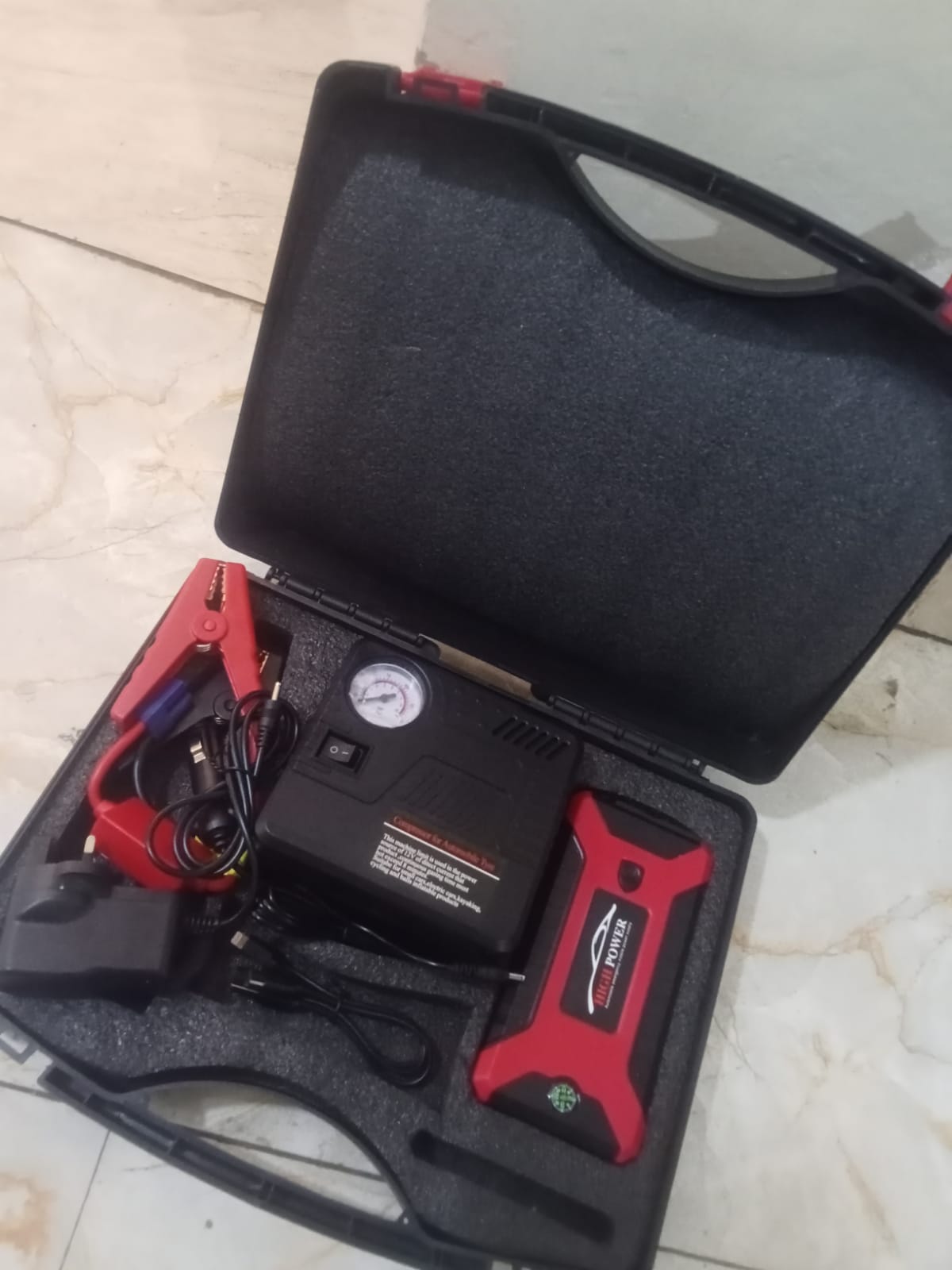A car jumper kit (portable jump starter kit) is a compact, all‑in‑one emergency battery booster designed to revive a dead vehicle battery without relying on another car. Modern kits incorporate powerful lithium (or sometimes lead‑acid) battery packs, smart clamps, and multiple safety protections, making them indispensable tools for motorists, especially in remote or low‑service areas.
Key Components & Design
-
High‑capacity battery pack: At the heart is a rechargeable battery (often 10,000 to 30,000 mAh or more) capable of delivering a high peak current — typically 300 A up to over 2,000 A depending on model. This enables it to crank 12V vehicle engines (petrol or diesel) by providing that surge of current needed to spin the starter motor.
-
Smart jumper clamps / cables: These clamps are integrated with protection circuits to prevent reverse polarity, short circuits, sparking, overcurrent, and overvoltage. Many designs include built‑in LED indicators or alerts if the clamps are incorrectly connected.
-
Multiple output ports: Because the battery is similar to a power bank, many kits include USB (5 V) and sometimes DC outputs (12 V, 16 V, 19 V) to charge phones, tablets, laptops, lights, and other devices.
-
LED flashlight / SOS / strobe modes: For roadside assistance in low light, kits often include built‑in LED lighting with white light, SOS flash, strobe, or emergency warning modes.
-
Additional features: Some premium kits include a built‑in air compressor (tire inflator), digital pressure gauge, cables/adapters for inflating bike tires, balls, or small inflatables, or even jump starter + power inverter combos.
-
Safety & protections: To ensure user safety and protect your vehicle, these kits usually incorporate a range of protections:
– Reverse polarity protection (won’t allow current if clamps are reversed)
– Overcurrent / overcharge protection
– Short circuit protection
– Overtemperature / thermal protection
– Overvoltage / undervoltage safeguards
– Spark‑proof clamps
Performance & Capabilities
A good jumper kit can:
-
Start small to mid-sized petrol engines (e.g. up to 6 L or more, depending on design) and many diesel engines, particularly because peak currents can reach 1,000 A to 2,000 A in advanced models.
-
Deliver multiple jump starts on a single full charge (many kits claim 20, 30, or even 50 starts) depending on battery capacity.
-
Charge USB devices (phones, tablets) in emergencies, making them versatile beyond just starting cars.
-
Be compact and portable—light enough to be stored in your car trunk or under a seat, but rugged and weather‑resistant for roadside conditions.
Use & Practical Scenarios
Imagine you’re stranded with a dead battery. With the jumper kit:
-
You power on the unit (some have battery status indicators or displays).
-
Connect the smart clamps to the car battery (red to positive “+”, black to negative “–”).
-
If everything is properly connected and safe (indicator lights / beep confirm), press the “start” or “jump” button.
-
The battery pack delivers a surge to crank the engine. Once the engine runs, you disconnect the clamps in the reverse order.
-
After the jump, you can use some of the remaining battery capacity to charge your phone or power small electronics.
Additionally, if the kit has an inflator, you can use it to top up tire pressure after a puncture or underinflation, making it a multipurpose roadside helper.
Benefits & Advantages
-
Self‑sufficiency: You don’t need another vehicle or help to revive your battery.
-
Compact & easy: Much smaller and safer than carrying long traditional jumper cables.
-
Multifunctional: Acts as power bank + flashlight + inflator (in advanced kits).
-
Safety features: Designed with protections to avoid damage or hazards.
-
Peace of mind: Ideal for long trips, remote routes, or regions where roadside help may not arrive fast.
Considerations & Maintenance
-
Match the peak current and capabilities to your vehicle’s engine size. Undersized kits may fail on large engines.
-
Keep the battery charged: These kits gradually lose charge over time; many require periodic recharging (e.g. once a month) to stay effective.
-
Store in cool, dry conditions. Extreme heat or cold can reduce battery life or performance.
-
Inspect the clamps & cables regularly for corrosion or damage.
-
Follow the manufacturer’s operational instructions and safety warnings carefully to avoid mistakes (like connecting the clamps incorrectly).




Reviews
There are no reviews yet.